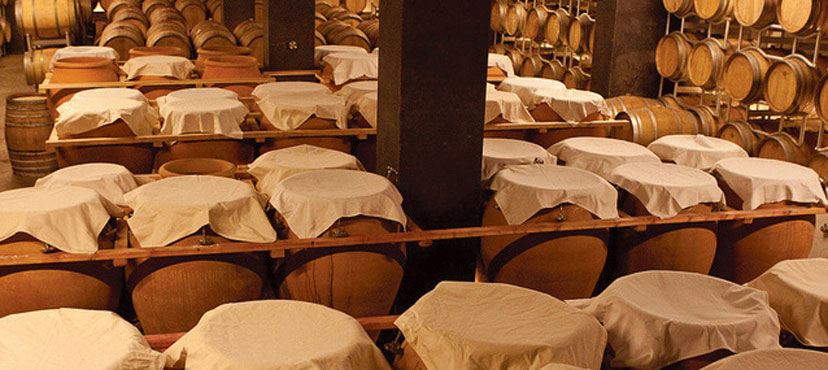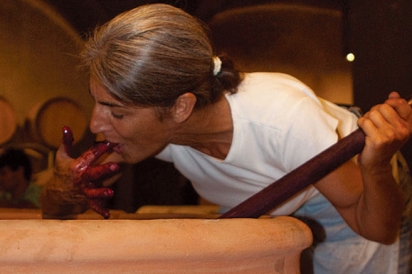Wine Fermentation Goes Biblical…Again
The amphorae are back. The ancient way of making and storing wine in clay amphorae, like the Greeks and the Romans did, is all the rage today.
Made of clay, amphorae come in different sizes. They can be used for fermentation and/or aging of wines, both red and white. They can be buried in the ground, half buried or not buried at all. Although the number of amphorae users is quite low, they’re very much talked about. As they often belong to the natural wine movement, they’ve received a lot of attention lately:
Josko Gravner, one the foremost innovators in the use of terracotta amphorae for grape fermentation, is a respected and innovative Friulian winemaker. His vineyards lie in the Friuli-Venezia Giulia region of northeastern Italy straddling the Italian/Slovenian border. Since 2001, he has used beeswax-lined giare (amphora) made in Georgia and buried in the ground. The resulting white wines drink more like reds: deeply flavorful, dark in color and tannic.
Yves Canarelli at Clos Canarelli, one of Corsica’s quality growers, knows exactly why he is doing it: He says that the amphora protects the wine from oxidation in a natural way. And he does not need to add any sulfur. The porous clay protects, and the wine does not oxidize. Yves Canarelli uses 400-liter amphorae, but his production in amphorae is very small, only 1,500 bottles per year.
Celler Del Roure Pablo and Paco’s bodega fonda (underground winery), first excavated 300 years ago, houses 97 buried amphorae ranging from 600-2,800 litres. Abandoned in the dark days of 1930s Spain, the Catalayuds are busy renovating this special cellar and its amphorae. Of the 97 ancient jars, 20 have been dug out, renovated and re-buried in the local soil — a sand, limestone, chalk and clay mix. Mimicking the maturation effects of barrel-aging without adding oak flavor or de-acidifying the wine, these renewed amphorae are part of a process of cultural renovation and rediscovery, accompanied by the revival of ancient local varieties, lost until nearly recently.
Elisabetta Foradori is a well-known winemaker in Trentino Alto Adige in northern Italy. An outspoken fan of this method of fermenting wines, with 70 amphorae, she has a relatively large production of amphorae wine. “The wines get a cleaner flavor if they are made in a clay amphora,” she says. Foradori’s estate is run biodynamically. She first became known to the world through her fantastic wines made from the local grape teroldego.
For all her amphorae wines, she dumps in the juice, skins and some stems, then leaves the wine inside for six to eight months. She then removes the wine, ages it for a month in wood casks, and bottles it. Capped with a stainless steel lid she devised, each amphora is a special fermentation vessel. It holds a steady temperature during fermentation. The wide mouth at the top allows the cap of skins to macerate suspended in the juice.
Clay is an element that can connect the energy of soil to the energy of the cosmos, Foradori says. “It sounds very esoteric, but there is something in the clay. For a grape, it’s going back into the earth,” she says. “Yes, it’s a smart way to preserve the wine, but it’s also a link to the soil. I think it preserves the energy.”










